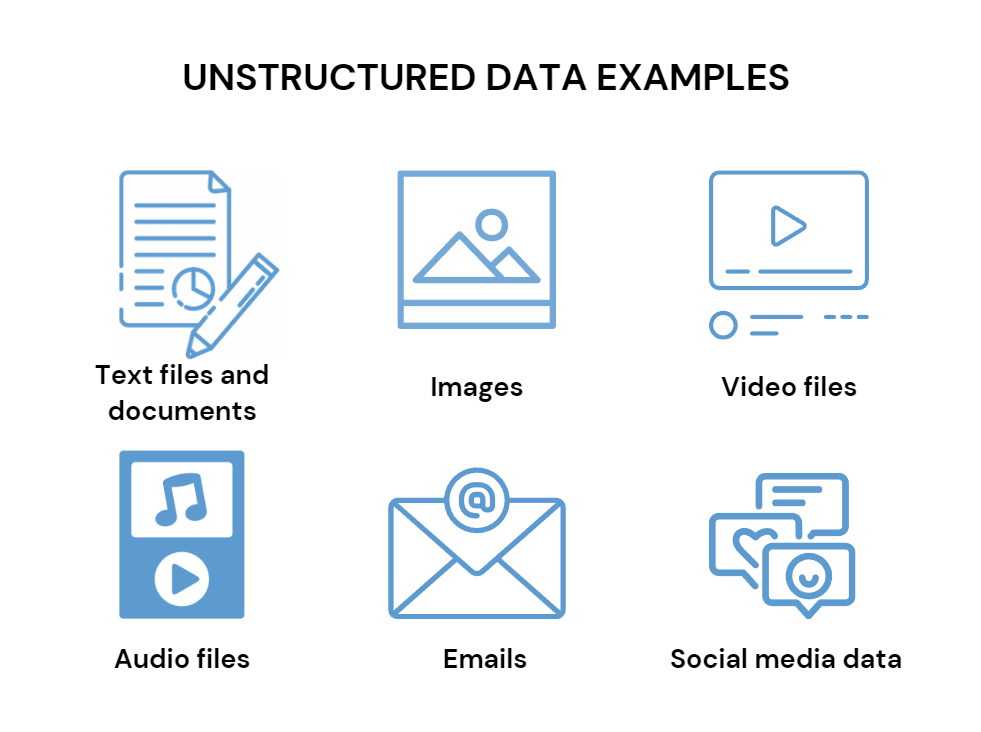When it comes to data, files can come in many different forms. Data can essentially be categorized into two primary forms: structured and unstructured. However, what sets them apart precisely?
What is structured data?
Structured data is the bedrock of organised information. It is the type of data that adheres to a predefined format, neatly arranged in rows and columns. Picture the data you find in a spreadsheet or a traditional database. Structured data’s hallmark is its consistency, making it a perfect match for tasks that require systematic analysis and organisation.

Examples of structured data encompass names, dates, addresses, credit card numbers, stock information, geolocation, and more.
What is unstructured data?
Unstructured data refers to data that does not have a predefined data model or organised structure, making it more challenging to analyse and process using traditional database and data management techniques.
Examples of unstructured data include:
- Textual content: Articles, blogs, social media posts, customer reviews, and emails.
- Multimedia: Images, videos, and audio recordings.
- Handwritten notes and scanned documents.

Advanced analytics and technical expertise are essential to extract insights from this complex data. Nevertheless, the rewards are substantial for those who unlock its potential.
The Role of AI
Artificial intelligence plays a pivotal role as the bridge between structured and unstructured data, facilitating the seamless exchange and transformation of information. Through the power of AI, machine learning algorithms are trained to decipher complex patterns, thereby enabling the conversion of unstructured data into structured formats, or vice versa.
Structured data is the trusted foundation that businesses rely on for precise analysis, while unstructured data opens doors to new frontiers of customer insights and predictive analytics. As marketing professionals, embracing the power of both worlds is essential in the data-driven age we find ourselves in.


